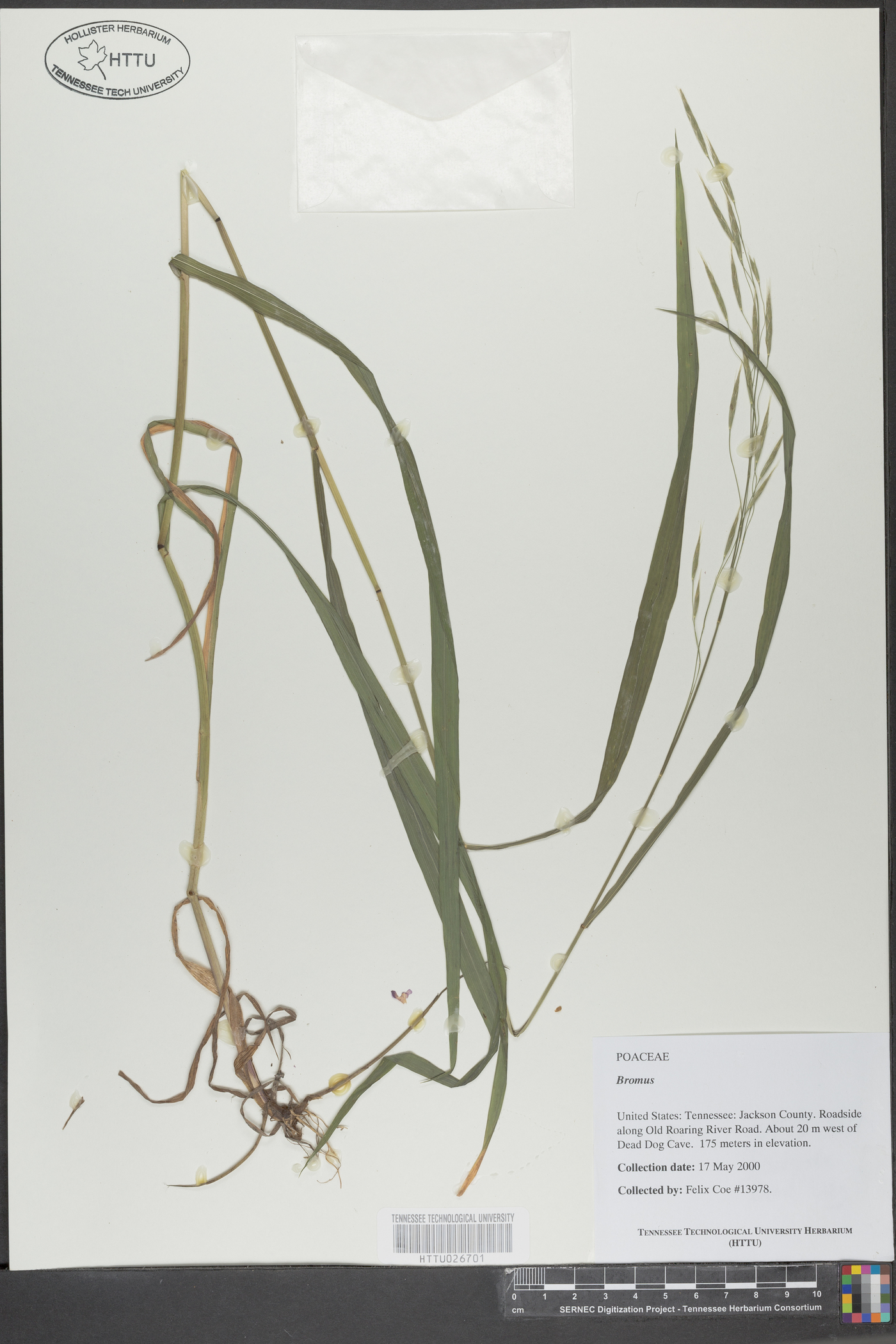
|
Family: Poaceae |
Plants annual or perennial; usually cespitose, sometimes rhizomatous. Culms annual, not woody, not branching above the base; internodes usually hollow, rarely solid. Sheaths closed, margins united for most of their length; collars without tufts of hair on the sides; auricles sometimes present; ligules membranous, sometimes shortly ciliate, those of the upper and lower cauline leaves usually similar; pseudopetioles absent; blades linear to narrowly lanceolate, venation parallel, cross venation not evident, without arm or fusoid cells, cross sections non-Kranz, epidermes without microhairs, not papillate. Inflorescences usually terminal panicles, sometimes reduced to racemes in depauperate plants; disarticulation above the glumes and beneath each floret. Spikelets 5-80 mm, not viviparous, terete to laterally compressed, with 3-30 bisexual florets, distal florets sometimes reduced; rachillas prolonged beyond the bases of the distal florets. Glumes usually unequal, rarely more or less equal, exceeded by the distal florets, usually longer than 1/4 the length of the adjacent florets, lanceolate, 1-9(11)-veined; florets terete to laterally compressed; calluses glabrous, not well developed; lemmas lanceolate to ovate, rounded or keeled over the midvein, herbaceous to coriaceous, 5-13-veined, veins converging somewhat distally, apices usually minutely bilobed to bifid, rarely entire, usually awned, sometimes unawned, awns unbranched, terminal or subterminal, usually straight, sometimes geniculate; paleas usually shorter than the lemmas; lodicules 2, glabrous, not veined; anthers 3; ovaries with hairy apices; styles 2, bases free. Caryopses narrowly ellipsoid to linear, longitudinally grooved; hila linear; embryos about 1/6 the length of the caryopses. x = 7. |
This project was made possible in part by the Institute of Museum and Library Services [MG-70-19-0057-19].
Powered by Symbiota



